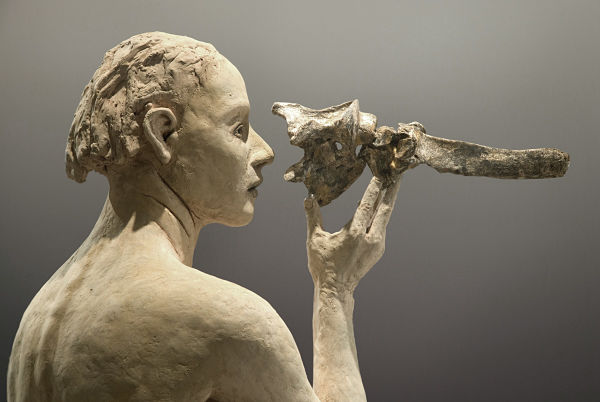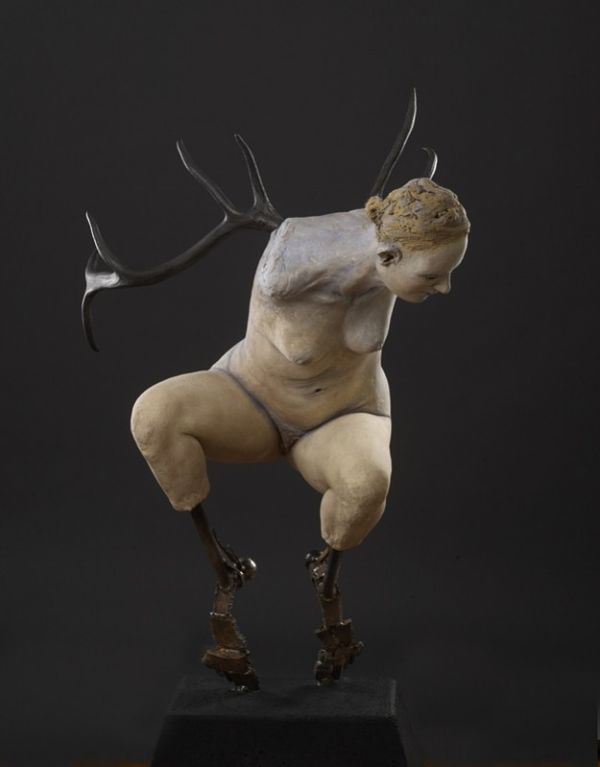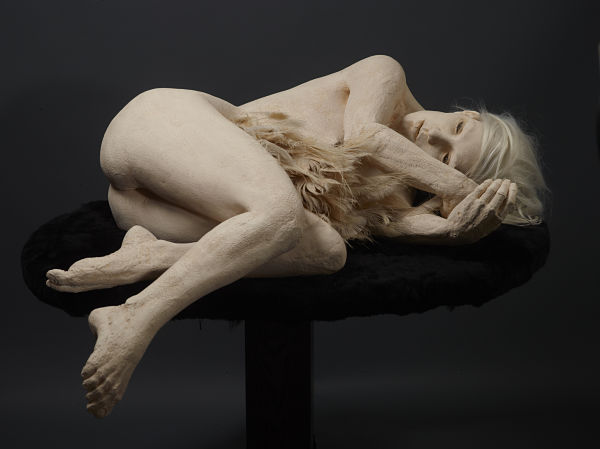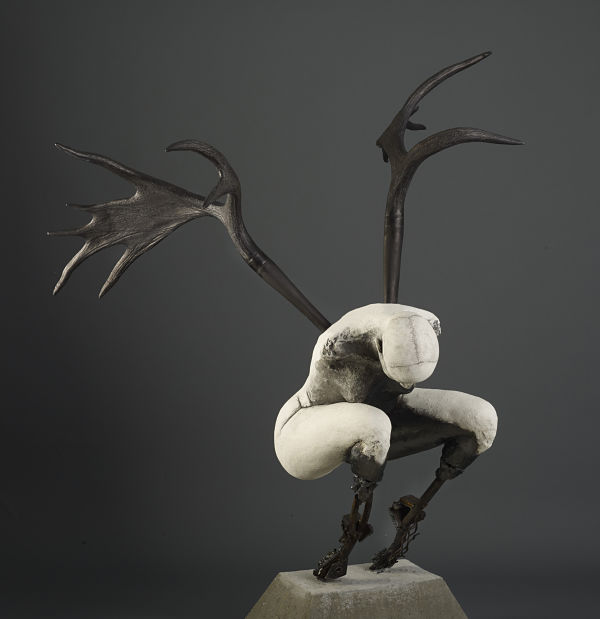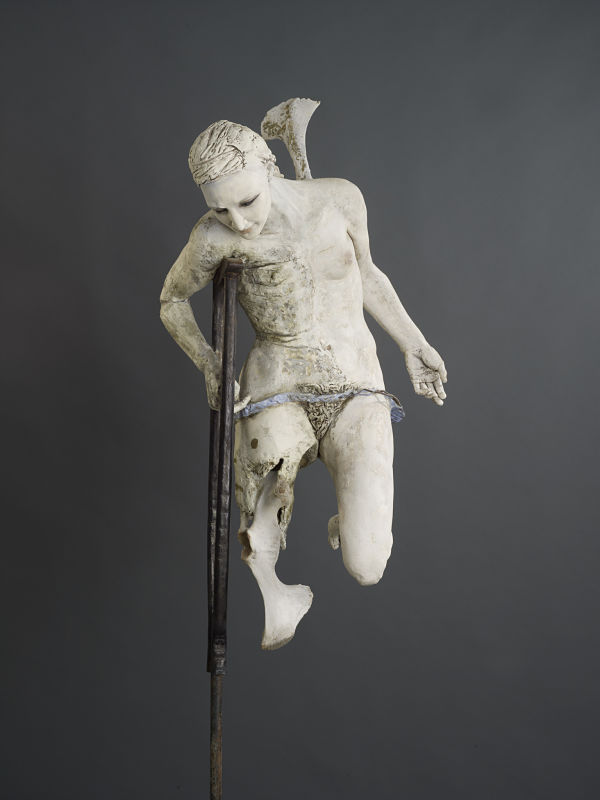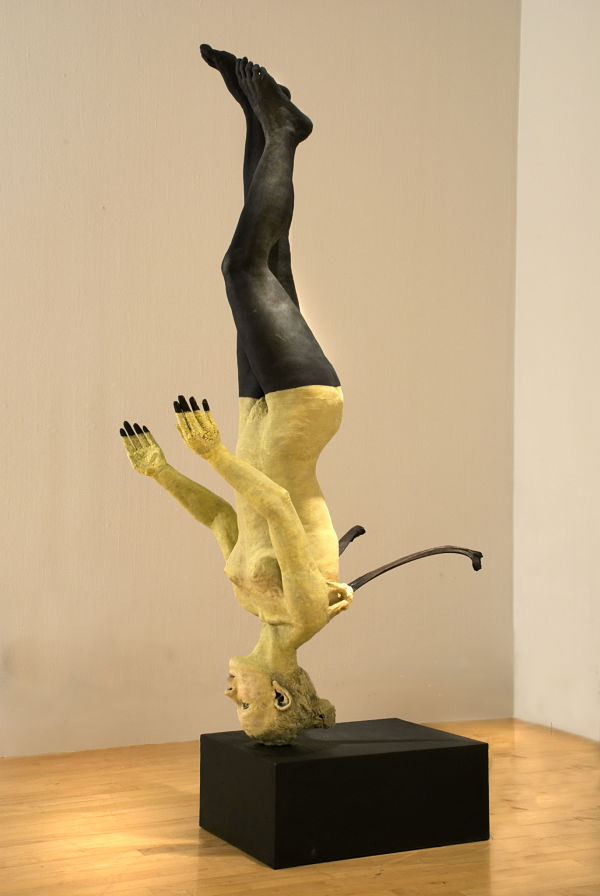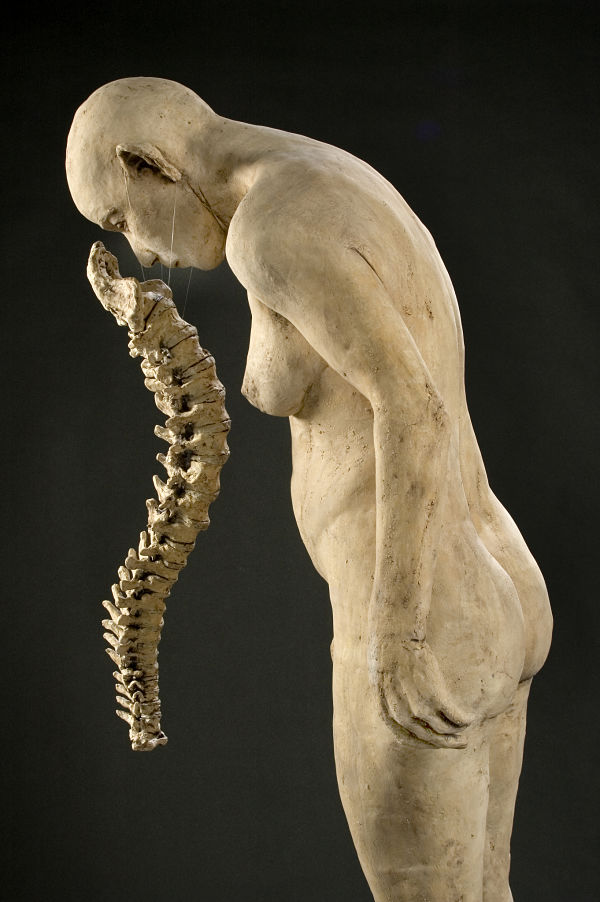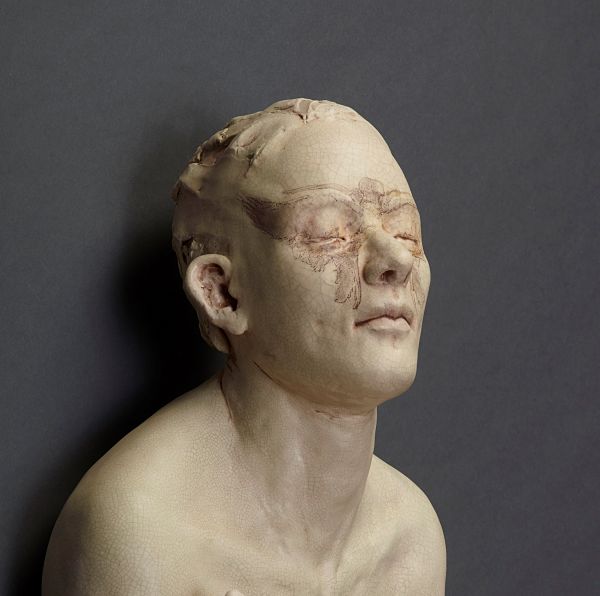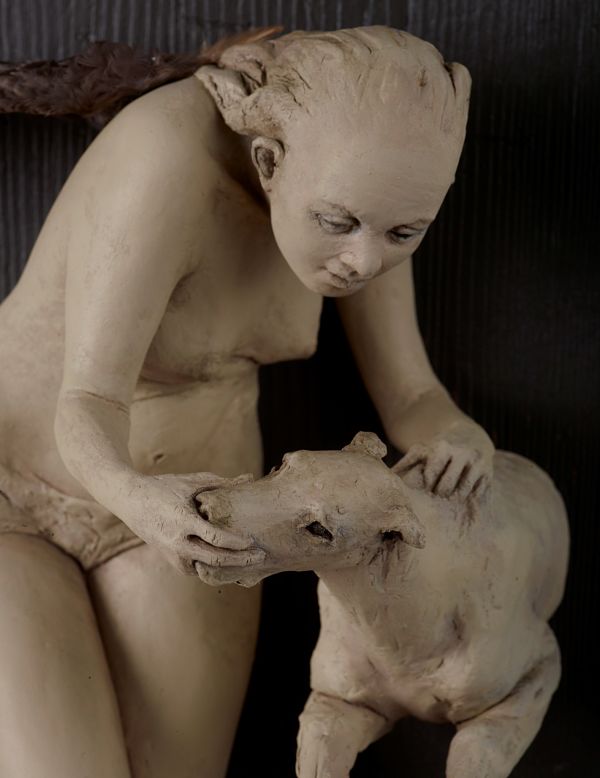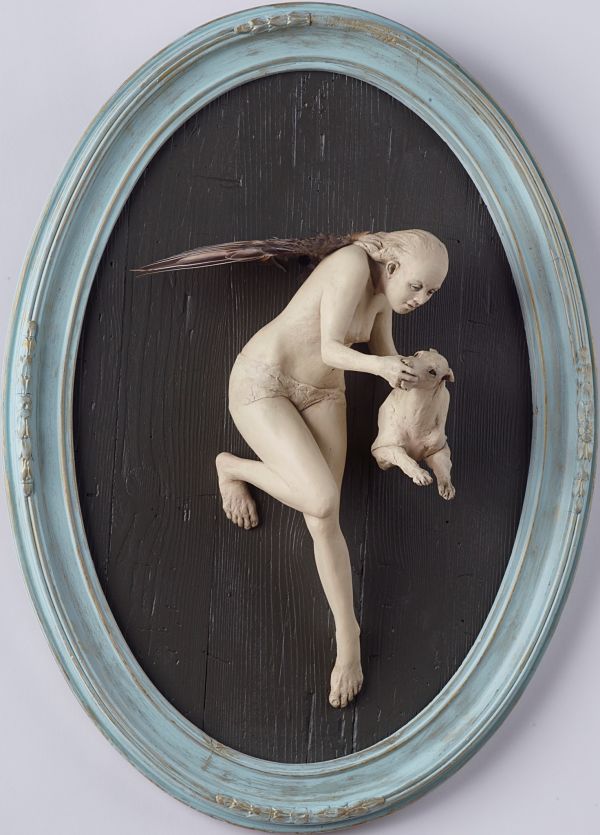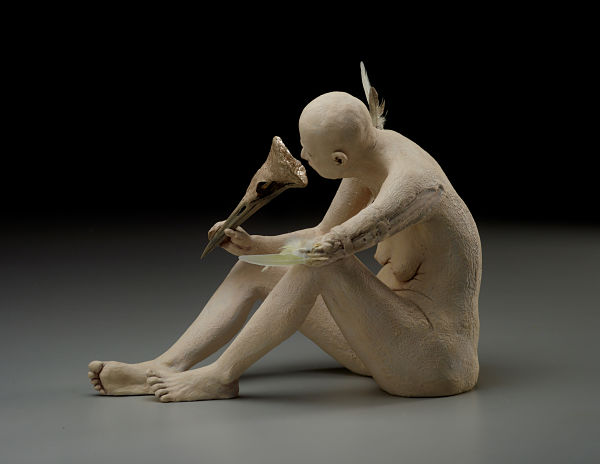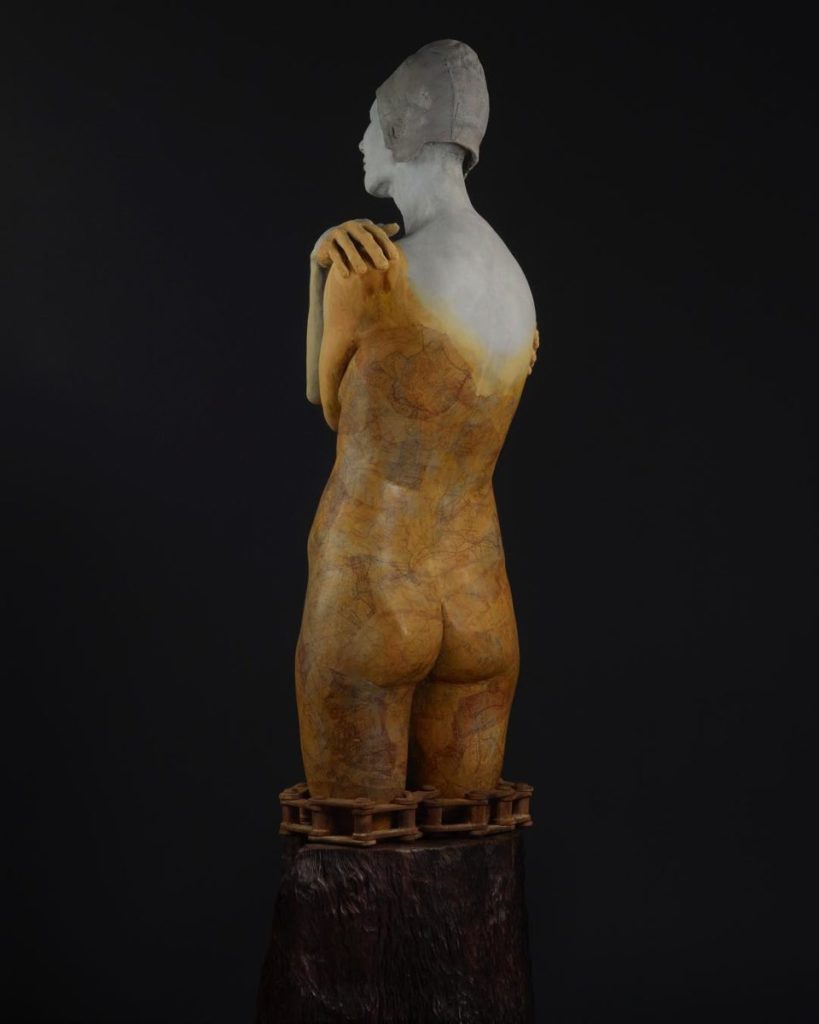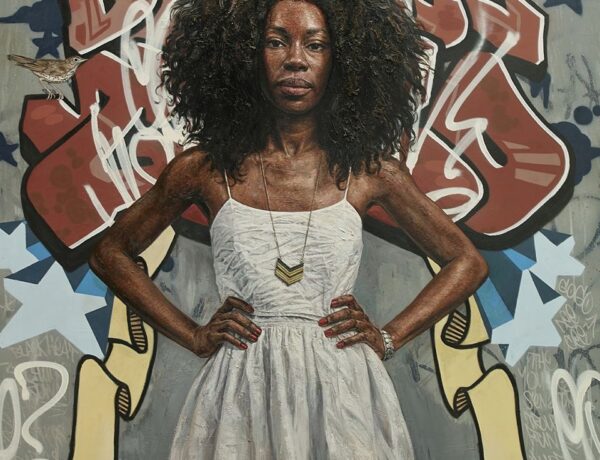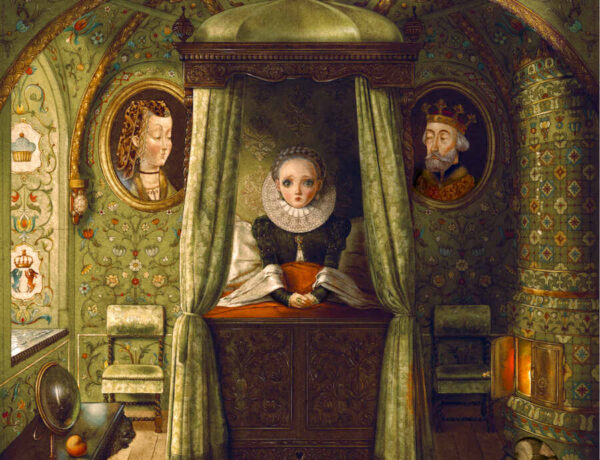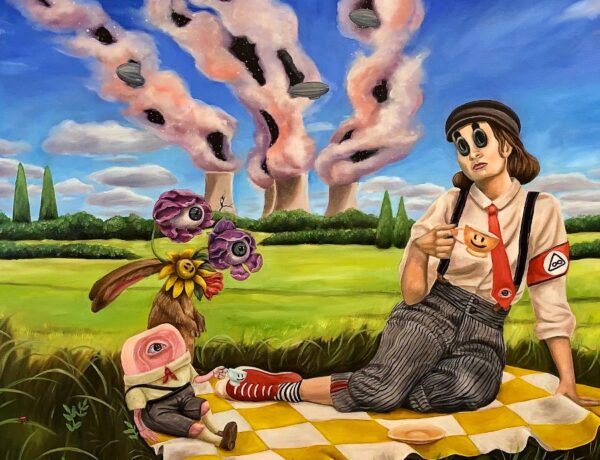Survival has always been the main essence of human beings. And for a time, wrapped up in the comfort of our modern society, we had the fleeting illusion of being safe. Intact. But the truth is that we are all broken, in a way or in another. Physical and psychological traumas, diseases, social stigmas are part of our humanity and of our experience in life. When life breaks us, we can regret it, we can fight the idea that it defines us but, more importantly, we can celebrate the fact that we survived… that we transcended this bad experience and that, now, we have the power to thrive.
When discovering the ceramic sculpture of Susannah Zucker, you are struck with how artfully she transposed this process into her creations. This artist based in Asheville, North Carolina, reveals the trauma, invisibility and strength of persons with physical disabilities, and this with a humbling delicacy. At first, her figurative sculptures can be disturbing. Most of these human figures are crouching, seemingly wrestling with some internal torments and pain. The vision of their missing lambs and medical devices are uncomfortable.
Yet, Susannah skillfully draws the beholder toward a deeper sense of intensity with regards to the body, to reveal the light living below the skin of these broken figures. So, at second sight, our culture allows us to recognize their quality of carnival performers, straight out of a medieval freak show or some kind of Cour des Miracles, were disabled persons were kings and heroes. They are dancing to postpone decay.
And then, we realize that most of their appendages are made of bones and antlers. These additions chosen by the artist are from horse, cow, moose and elk remains. These animal limbs are incredibly natural, visceral. They are at the same way a testament of the existence of these creatures, linking us all to wildlife, but also hinting at the animal instincts and realities of our human nature. Feathers and fur also add a subtle eroticism and this layering of animalistic, medical and even fetishistic overtones are evidences of our primal nature. Yes, we too are beasts, innocent and fierce, struggling to save our skin.
With these medical devices, bones, etc. the sculptor explores the idea that trauma bestows the ability to cultivate personal power and liberation. When giving her characters bird-like qualities, she even summons the mythology of fallen angels. Her creations capture the moment between flight and fall or more accurately the opposite, as the sculpted figures seem to exceed the limitation of conventional physicality. In a way, Susannah Zucker acts like an alchemist, who sublimates anatomy above ordinary human condition, using it as a vehicle of transmutation for the human essence.
Her message seems to be the following: our scars are part of us, they are our stories. But they certainly don’t mark the end of it. Absolutely not. They are the capital letter that starts a new sentence. They are the material to starts a new anatomical sculpture. And we have the personal responsibility to become our own writer, our own sculptor. Our own creator.


